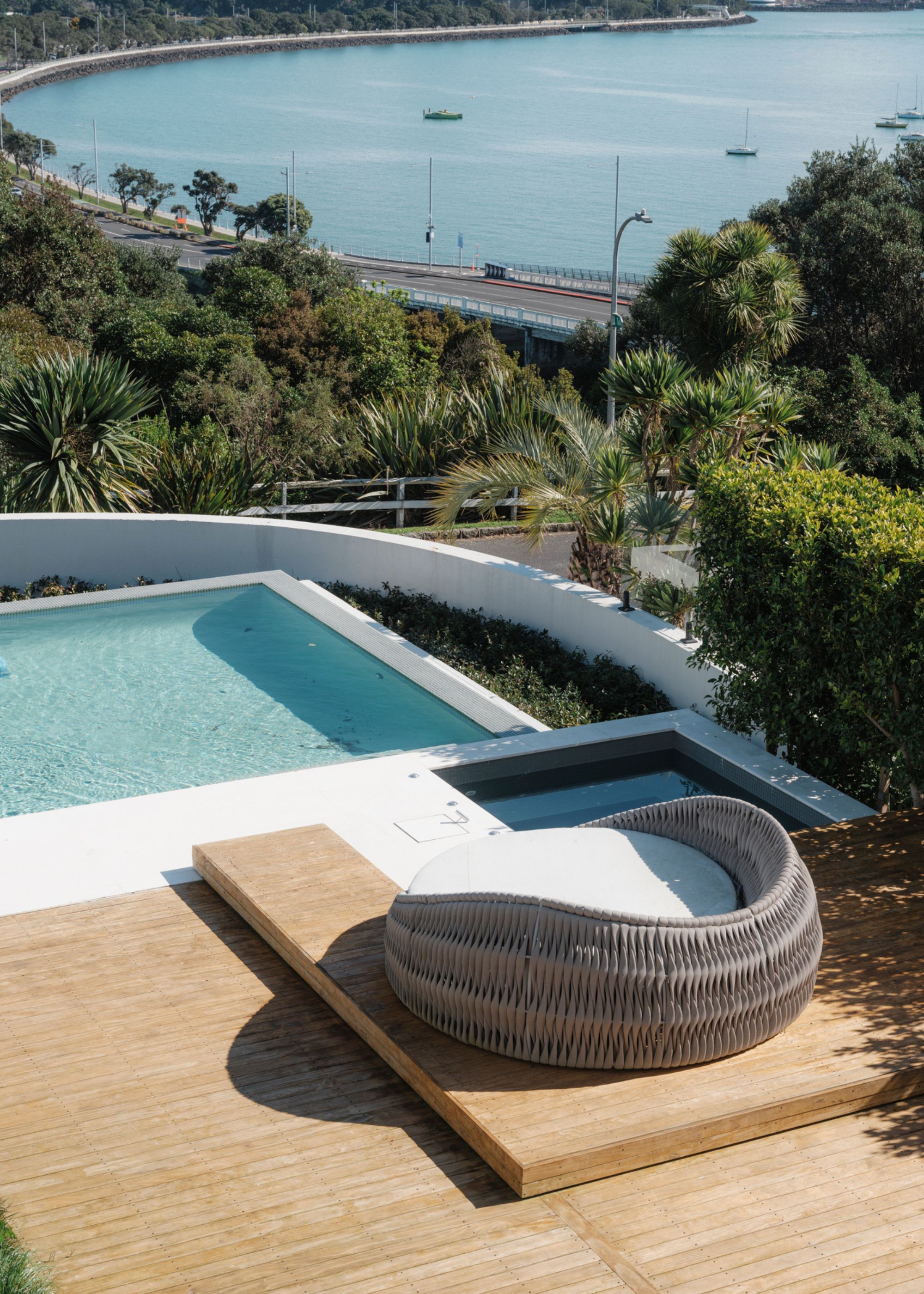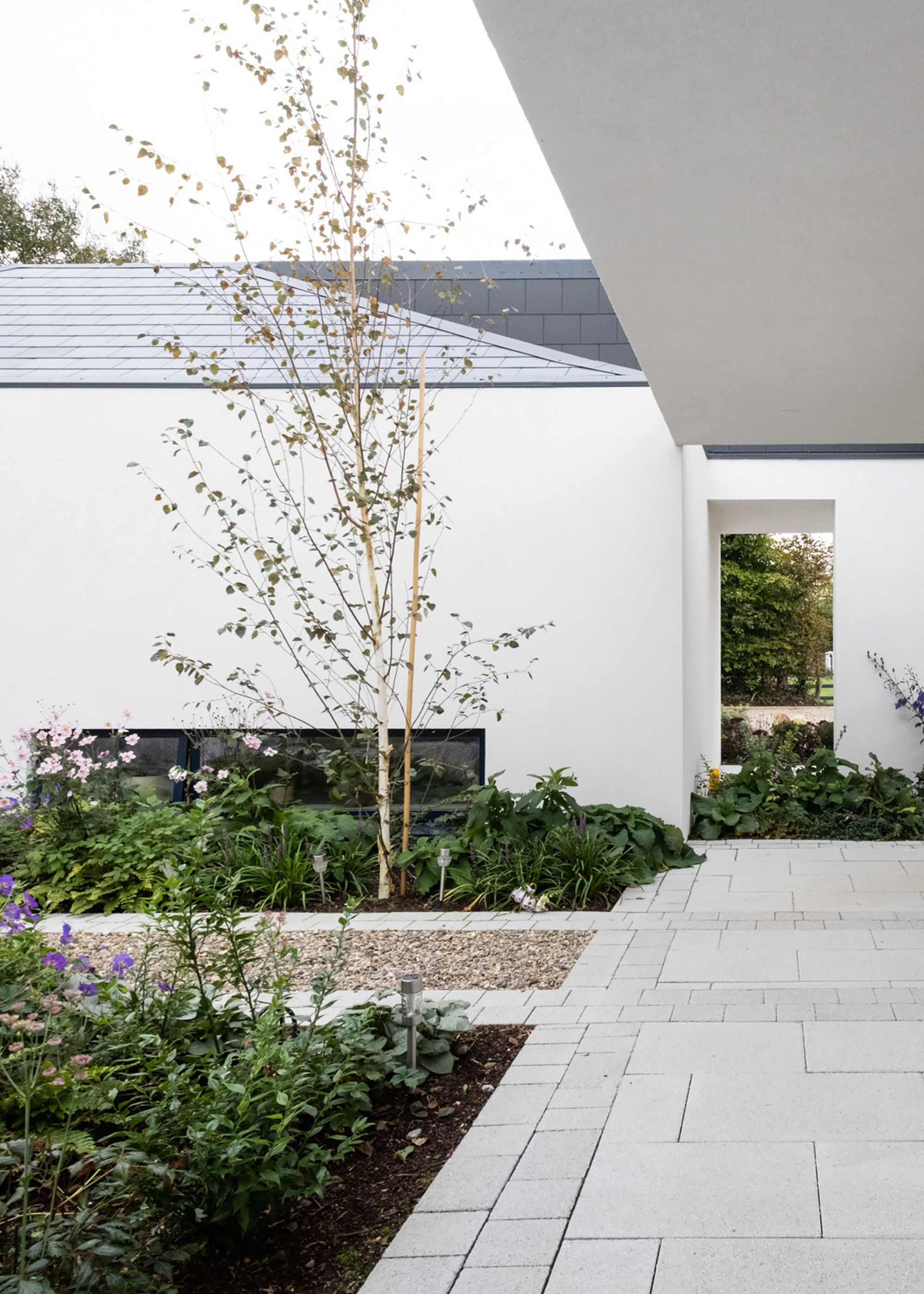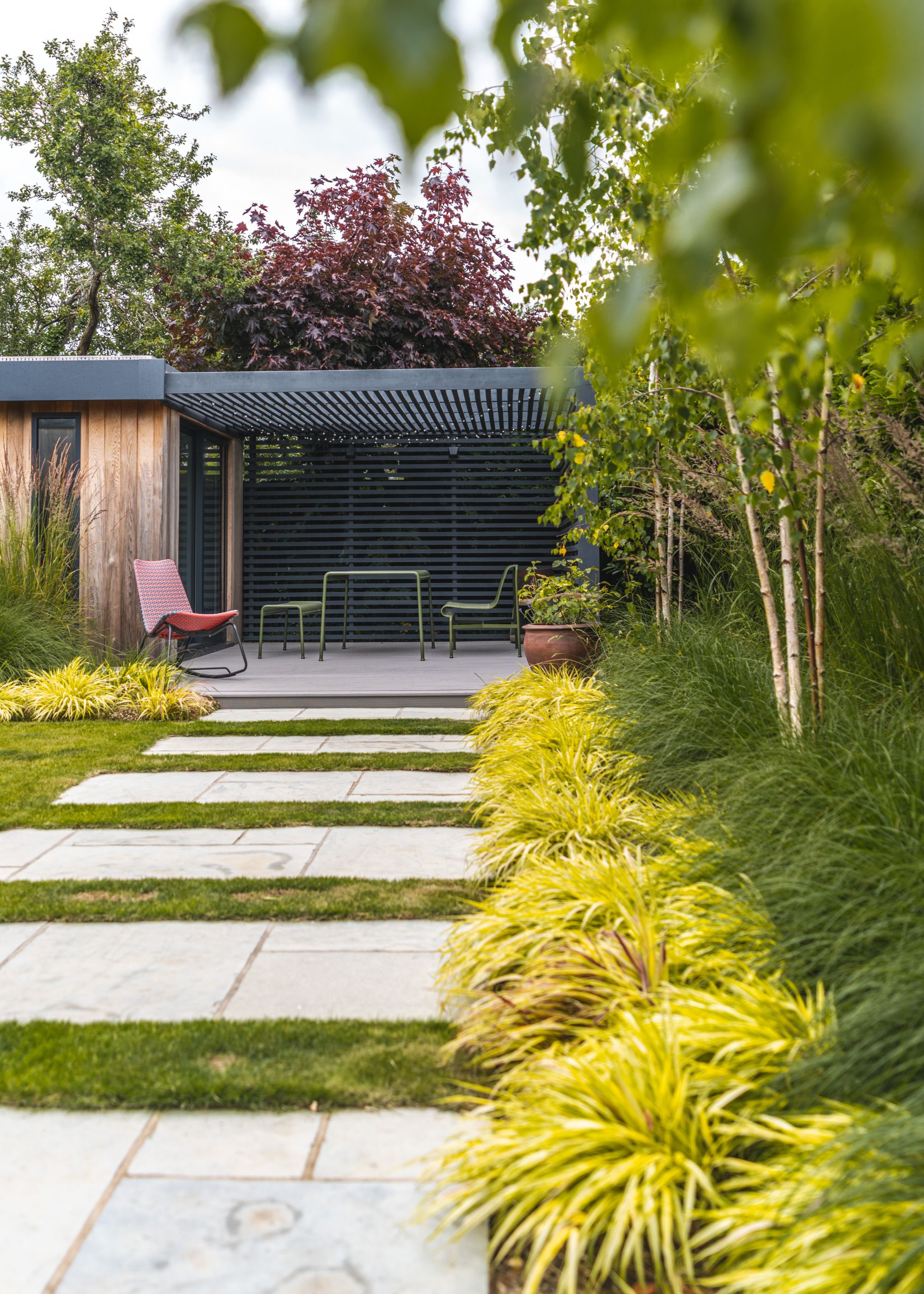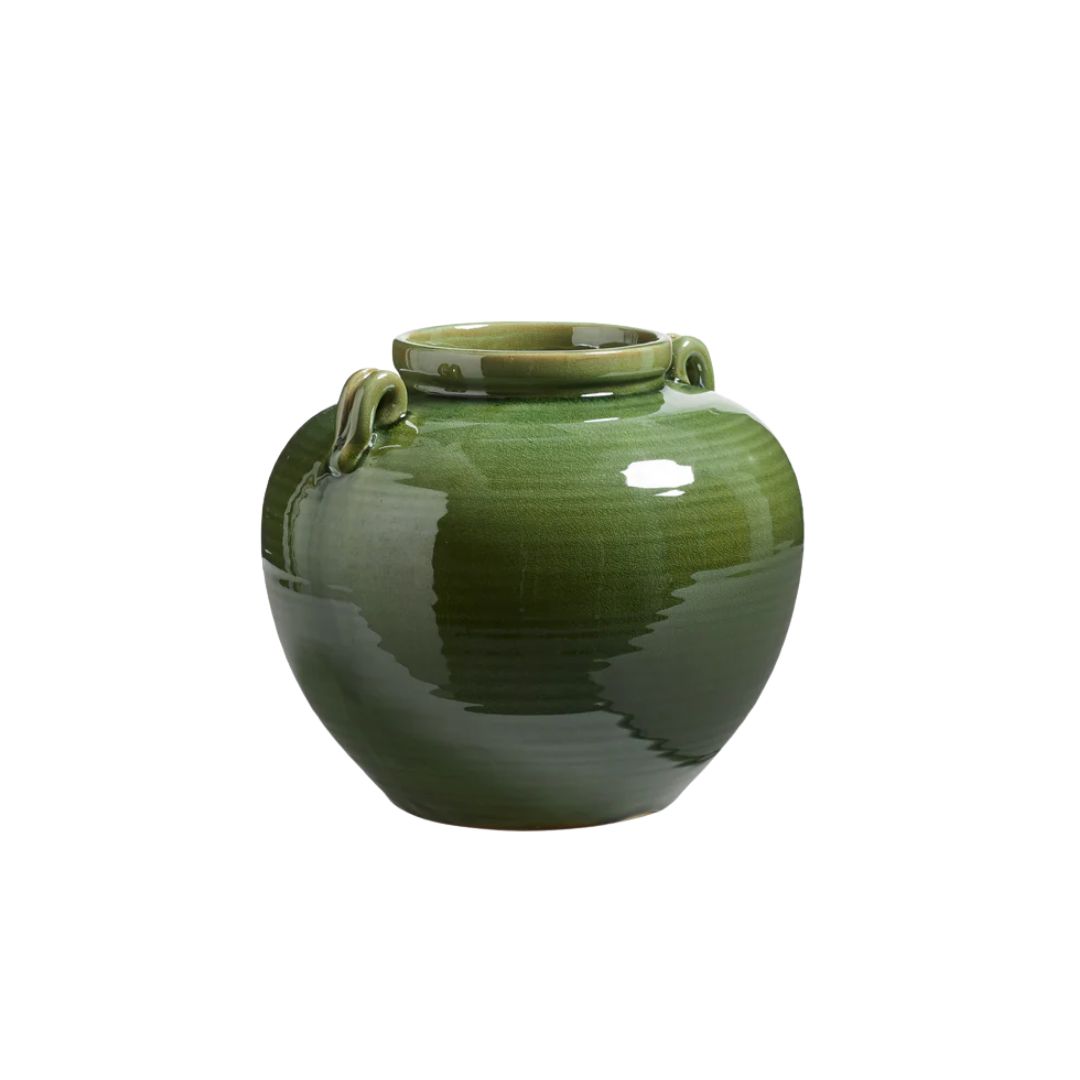4 Things Never to Put in Your Garden's 'Suntrap' — And What to Swap Them for If You've Made Any of These Mistakes
There are a few things that should stay well away from the sun's heat in your garden's design, if you want them to endure more than one hot summer


Is your garden soaking up a bit too much sun? Once the heat starts to pour in, it can be quite the challenge to know what garden features could be damaged under the sun's scorching heat.
Knowing how to take care of your modern garden and what to avoid placing in your outdoor living areas, suntrap, is the key to a healthy and thriving landscape, but what exactly should you keep in mind?
After speaking to a landscaping expert and garden designer, Andy Stedman — he shares a few tips on what to never put in your garden's suntrap and why. Trust me, you'll be quite surprised (I know I was.)
1. An Artificial Lawn

As well as being a backyard feature that is probably devaluing your home, artificial turf should be avoided in your garden's suntrap, according to Andy.
"It might seem like a quick win for low maintenance, but under direct sun, artificial turf gets dangerously hot," explains Andy. "We’ve recorded surface temperatures of over 60°C on summer days, genuinely unsafe for bare feet or pets. No surprise the RHS has now banned it from all show gardens."
He continues: "We only ever specify artificial lawn in the rarest of cases, when a client physically has no other option. It also reflects glare, fades quickly, can disintegrate, and has a shorter lifespan than most people realise when they’re sold on the convenience."
Andy says If a natural lawn isn’t viable, then "you’re better off removing the idea entirely and adding more planting to soften the hard landscaping and bring the space to life."
The Livingetc newsletters are your inside source for what’s shaping interiors now - and what’s next. Discover trend forecasts, smart style ideas, and curated shopping inspiration that brings design to life. Subscribe today and stay ahead of the curve.

Andy Stedman is the Founder and Creative Director of Andy Stedman Design, a multi-award-winning garden design studio working across London, the South, the Home Counties and beyond. With over 22 years of experience and more than 3,000 gardens designed and landscaped, Andy and his team specialise in transforming outdoor spaces into high-end, liveable extensions of the home that enhance outdoor living and add lasting value. Their work blends beauty, practicality, and timeless design principles for modern living.
2. Dark Paving Without Proper Shade

Your patio flooring ideas matter more than you realize. According to Andy, another thing you should never put in your garden's suntrap is dark paving without proper shade.
"Charcoal or jet-black stone might look dramatic and bold, but in a suntrap, it turns your terrace into an oven. Just like artificial grass, it can become impossible to walk on without shoes," says Andy. "If a client really wants darker tones, which is rare, I always suggest incorporating shade. Whether that’s a pergola, parasol, shade sail, or strategic planting, it keeps the space functional, especially during peak summer."
Andy continues: "Dark paving also shows up dirt and marks more easily than softer, timeless tones. And unless you keep a close eye on your full materials palette, it can look dated faster than you’d think."
Now, if you want to follow those garden trends, you might want to take up Andy's advice.
3. The Wrong Plants

Keep an eye on those fragrant plants for patios, as a few of them might not be keen on too much sun, which is where shade plants for containers might come in handy, or perhaps choosing plants that can withstand the heat.
"This one’s a classic mistake. We’re often asked to include shade-loving plants or just the wrong plants, full stop, in the hottest part of a garden. Ferns, hostas, heucheras… they won’t stand a chance," explains Andy.
He notes that the "best gardens work with the site’s existing conditions, not against them. If you’ve got a bright, sun-drenched spot, lean into it with 'Mediterranean-style' planting. Salvias, lavender, sedum, verbena, and ornamental grasses thrive in the heat, add movement and texture, and bring scent and softness to the space."
As stated by Andy, there is one simple rule, and that is "right plant, right place. And resist the urge to grab one of everything that catches your eye, like a magpie, at the garden centre without doing your research first."
4. White Rendered Walls

"White render still gets requested fairly often, despite there being far more practical and aesthetic options, and being slightly outdated," says Andy. "In a suntrap, white walls reflect light back at you like a ski slope in Morzine. They’re harsh on the eyes and rarely stay clean, even with modern systems like K-rend or Weber."
For alternatives, the expert suggests natural stones, matte finishes, vertical planting, or timber cladding. "The trick is choosing materials that work with the style of your home and the surrounding setting. That might be flint, dry-stone walling, or timber, depending on the location."
Andy continues: "White render might look crisp and sharp initially, but in a sun-baked space it’s rarely the right choice."
So, if you're looking to elevate those small patio ideas, you might want to avoid those white rendered walls... at all costs.
Style Up Your Gardenscape

Color: Moss
Bright and bold, this planter from OKA will elevate your garden and make for the perfect container gardening tool. It's stylish, practical, and easy to use.

Color: Green
This chic and stylish garden parasol from Soho Home is dripping with luxury. Designed to bring the poolside aesthetic to your home, you won't regret adding this beauty to your gardenscape.

Color: Red and White
Lounge around in style with this striped outdoor furniture. Making it a great addition to the poolside or even patio area, this chic deck chair is both comfortable and affordable.
FAQs
What Actually Helps Trap Sunlight in a Garden?
"Good garden design doesn’t just work around the sun, it makes the most of it. With the right layout and materials, a garden can feel warm, welcoming and practical without becoming uncomfortable," says Andy.
He continues: "Positioning is everything. South-facing spots (as estate agents love to remind us) and west-facing corners (some designers say west is best) are prime for afternoon and evening light. These are perfect for layered terraces or raised seating areas that capture the last of the sun. Meanwhile, shaded nooks, firepit zones or secluded lounge spaces help make the rest of the garden feel just as considered once the sun moves."
Andy says hard surfaces like stone and concrete absorb heat quicker during the day and release it in the evening, "that’s why cities feel warmer than the countryside. In a garden, this same effect can work in your favour for evening use and outdoor entertaining," he notes.
"Sheltered planting plays its part too," says Andy. "Pleached trees, tall grasses and hedging can create natural windbreaks and help retain warmth. Layering taller plants at the back down to more delicate varieties at the front helps create structure and shelter in one move."
"Overhead structures like pergolas or studios with louvred or glazed roofs can also extend usability," adds Andy. He notes that this is because it brings in warmth and light while offering shelter — given that they are designed well. "Poorly thought-out structures will quickly become too hot — think conservatory in August."
Well, there you have it. As a final note, Andy says getting it right and avoiding extremes is key to a healthy urban garden. "Materials that are too light or too dark rarely work well in full sun. Warmer buff tones or subtle greys tend to strike the right balance. Grey might have been overdone a few years ago, but when handled properly, it still works."
"And rather than designing the suntrap as a standalone feature, think about how the whole space connects and flows, all year round. Even the most dedicated sun-lovers will want a shady corner now and then. If not you, your guests will."
Ultimately, as Andy says, "the goal is a garden that enhances how you live, not one that limits it."

Faiza is the Renovation Editor at Livingetc. She previously worked for The Independent as a News Feature Writer, where she crafted lifestyle, entertainment, and news stories. She also worked as an Audience Editor for the newspaper for almost two years. Thriving in the busy newsroom, Faiza also spent her time crafting stories for Sky News as an SEO reporter, where she produced stories based on trending topics. Lifestyle and interior design have been areas of interest for her for some time, and as she advances in this field, she will continue to refine her skills in all aspects of design. Faiza has a background in SEO, social media, and reporting. Her passion for writing goes beyond her work as she loves all things poetry and creative writing.